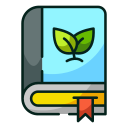Structure, Headlines, and Hooks for Green Topics
Craft headlines that preview a realistic change: “From Fridge Chaos to Zero-Waste Calm in 20 Minutes.” Use verbs that imply momentum. Ask readers which transformation they crave most and invite them to follow your series tackling each one.
Structure, Headlines, and Hooks for Green Topics
Use short paragraphs, subheads, and checklists. Place the first action within the first three scrolls. Add a summary for the super-busy. Encourage readers to bookmark the page and subscribe for a printable version delivered monthly.
Structure, Headlines, and Hooks for Green Topics
End strong: one step, one link, one conversation starter. Add a P.S. with a human touch. Invite replies: “Hit reply with your thrift-store find,” and promise to share a favorite submission in next week’s newsletter.







